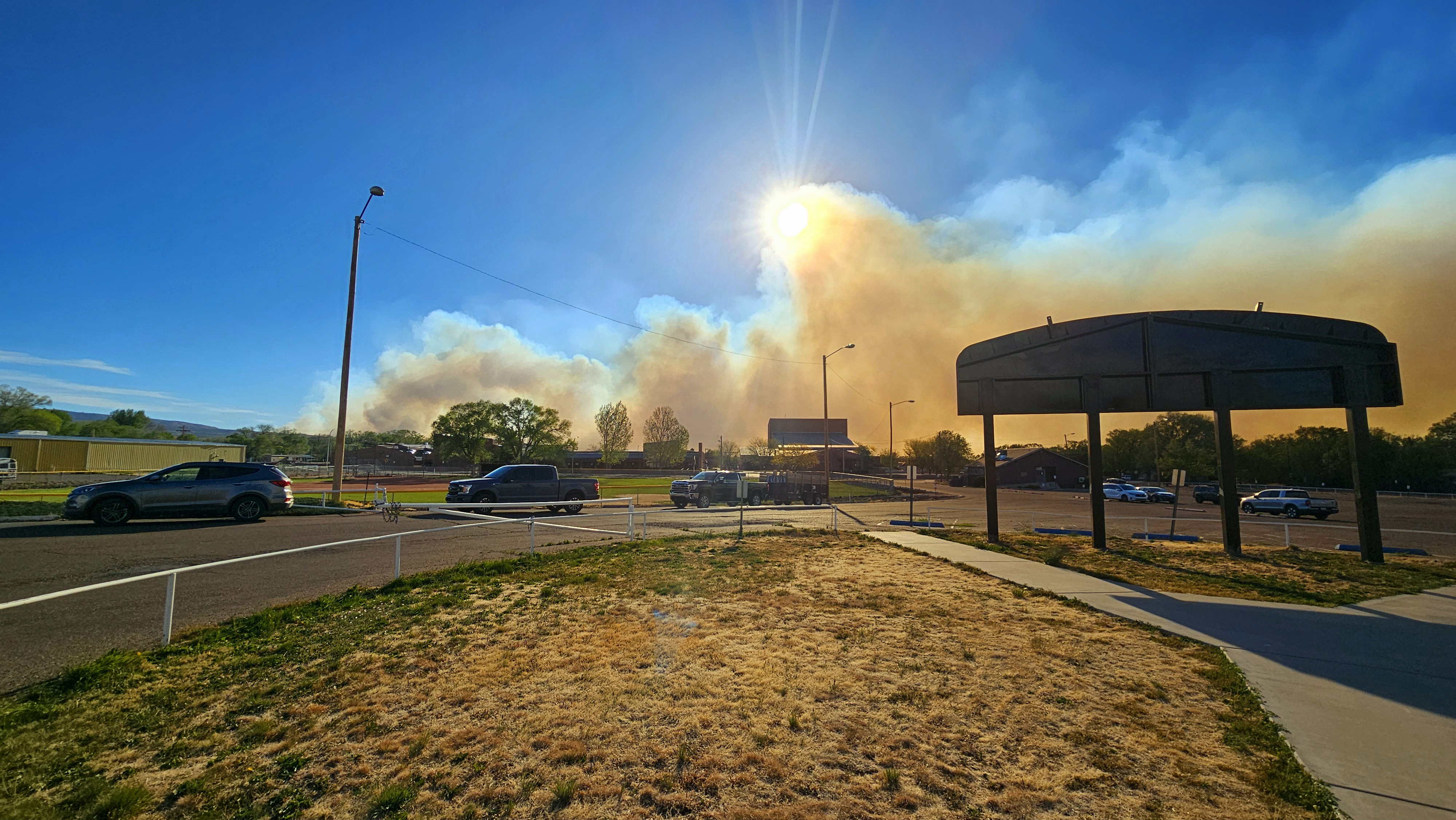As wildfire season intensifies across Arizona and particularly during the the current Greer fire, smoke has begun affecting local communities, raising understandable concerns for public health. While wildfires themselves may not always pose a direct threat to every household, the smoke they generate can travel miles, often creating invisible hazards that impact the air we breathe. At White Mountain Regional Medical Center, our goal is to ensure residents of our region are equipped with the knowledge and tools they need to stay safe.
Wildfire smoke is more than just a nuisance. It's a serious health concern that can cause immediate symptoms and, in some cases, worsen existing health conditions. Even when fires are miles away, smoke can be carried into our valleys and towns by shifting wind patterns, creating conditions that demand caution and preparation.

What Is in Wildfire Smoke?
Wildfire smoke is a complex mixture of gases and fine particles produced when wood and other organic materials burn. These particles are tiny, often less than 2.5 micrometers in diameter, and can penetrate deep into the lungs. In addition to plant material, smoke may also contain combustion byproducts from buildings, vehicles, and household items, many of which are toxic.
Exposure to this type of pollution can lead to a range of health problems, including:
- Eye irritation
- Respiratory symptoms like coughing or shortness of breath
- Worsening of asthma or COPD
- Cardiovascular stress
- Increased risk of respiratory infections
The impact of smoke is not limited to vulnerable groups. Healthy individuals may also experience symptoms, especially with prolonged exposure or high concentrations of smoke.
Populations at Higher Risk
Some individuals are particularly sensitive to smoke exposure and should take extra precautions even when air quality is only moderately affected. These groups include:
- People with asthma, chronic bronchitis, or other lung diseases
- People with heart disease
- Older adults
- Infants and young children
- Pregnant women
It is especially important for caregivers to monitor children and elderly individuals during smoky conditions, as they may be less aware of the symptoms or unable to take action on their own.
Current Conditions and Why They Matter
As of this morning, smoke levels in our region are considered moderate based on the Air Quality Index (AQI). While this means that the air is generally acceptable, there may be some risk for individuals who are unusually sensitive to air pollution. With smoke levels subject to rapid change due to shifting winds and fire behavior, staying informed is essential.
We recommend residents routinely check the AQI using trusted sources such as AirNow.gov, which provides current data and forecasts for local air quality conditions.
What You Can Do to Protect Yourself
If You Have a Respiratory Condition:
- Stay indoors when smoke is present. Close all windows and doors.
- Run your air conditioner on recirculate mode to prevent outdoor air from entering.
- Use air purifiers with HEPA filters to reduce fine particles indoors.
- Avoid physical exertion outdoors during smoky conditions.
- Keep medications accessible. This includes rescue inhalers, nebulizers, or any other treatments prescribed for asthma or COPD.
For Everyone:
- Create a "clean room" in your home with minimal windows and doors. Use a portable air cleaner in that space.
- Stock up on essentials such as medications and non-perishable food to avoid going out when air quality is poor.
- Limit indoor pollution. Refrain from burning candles, using wood stoves, or smoking indoors, as these can further degrade indoor air quality.
- Wear an N95 mask outdoors if air quality becomes unhealthy and you need to be outside. Cloth masks, bandanas, or dust masks will not protect your lungs from smoke particles.
Recognizing the Symptoms of Smoke Exposure
Even short-term exposure to wildfire smoke can cause the following symptoms:
- Coughing
- Wheezing
- Stinging eyes
- Scratchy throat
- Runny nose
- Headache
- Fatigue
- Trouble breathing
- Asthma attacks
- Chest pain
- Rapid heartbeat
If you experience any of these symptoms and they worsen or do not improve after removing yourself from the smoky environment, contact a healthcare provider. For severe symptoms or medical emergencies, dial 911.
Resources to Stay Informed
Up-to-date information and expert guidance can be found at the following trusted sources:
These pages provide real-time updates, preventive measures, and educational materials tailored to protect public health.
While our community is not in immediate danger from the flames of the current wildfire, the invisible danger of smoke should not be underestimated. White Mountain Regional Medical Center encourages all residents, especially those with existing health conditions, to take preventive steps now to safeguard their health.
As conditions evolve, we will continue to provide updates and support. For non-emergency health concerns related to smoke exposure, please contact your primary care provider. If you are experiencing a medical emergency, call 911 immediately.
Together, by staying informed and prepared, we can reduce the health impact of wildfire smoke in our community.